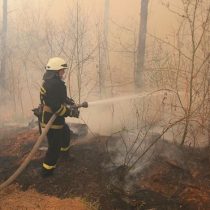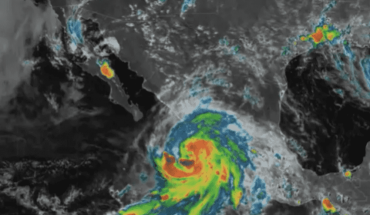
In a joint statement, representatives of the scientific world, NGBs and public bodies, warned of the dangers that fires can create in the central part of the country during the summer, ensuring that all conditions for a disaster in this macrozone are given. To this call, more than 100 professionals have joined, among them, three National Science Awards.
According to recent research, fires that could occur in the coming months pose an extra risk, as they will occur in the vicinity of the main cities of the country and surrounding agricultural areas, where they live about ten million people.
Among the direct and indirect effects these phenomena could have on the population are smoke poisoning, heatstroke, disruption of communication pathways, energy supply and loss of agricultural production.
In the case of smoke exposure, respondents warn that health consequences may be even greater in a coVID-19 health emergency context, especially in quarantined communes. Against this background, they consider the prevention of these claims as a “national priority”, which must be taken into account by both authorities and citizens.
The warning, they explain, extends to the sectors around Valparaíso-Viña Del Mar, Santiago and Rancagua, and would be present for this and the upcoming seasons of forest fires.
The danger of mega-need
The imminence of this new wave of fires is largely due to Chile living since 2010 an unprecedented drought in the last thousand years, which is shown more severely between the Fourth Region and that of the Biobío. Not only crops and human populations have been affected by mega-sechy, but also native vegetation.
At the end of 2019, researchers from the Universidad de la Frontera, Universidad Austral de Chile and the Center for Climate science and Resilience (CR)2, observed how the sclerophyll forest of the Coastal and Andes mountain ranges, characterized by vegetation of hard and perennial leaves, was massively transformed into “a brown forest” or brown. Thousands of peumos, keelyes, litres, lingues, bellotos and other plant species, typical of this Mediterranean system, would be drying out.
“Despite not knowing whether all the plants that lost the green matter actually died, it is urgent to take action because of the consequences of living near large expanses of dry vegetation, which is highly flammable, being able to feed the possible boilers of firestorms, whose temperatures can exceed a thousand degrees Celsius. Such fires are unstoppable for any containment system,” the experts note in their statement.
So-called “firestorms” occur when the same fires create favorable conditions for their spread, modifying microclimatic conditions in such a way that they allow them to advance faster and with high energy. “Because the air mass above the fire becomes extremely hot, it can generate clouds that in turn cause winds and lightning, transporting particles and favoring the spread of flames,” they explain in the document.
“Sclerophyll forests are adapted to dry periods, however, this unprecedented drought and the extremely dry year 2019 have led forests to an abrupt change in state in the summer of 2020, where much of the treetops are dry,” says Alejandro Miranda, researcher at (CR)2 and the Landscape Ecology and Conservation Laboratory at the University of the Frontier. “Although a potential recovery of this ecosystem is possible, all that dry material of leaves and branches increases the danger of fires, due to the large accumulation of fuel on the floor and in the aerial part of the forest, threatening the biodiversity that underpins and potentially generates large fires.”
To support the community, researchers and organizations also delivered a number of recommendations that could mitigate an eventual crisis resulting from these fires. These include early strengthening prevention and coordination plans to protect critical infrastructure, as well as implementing a communication and education plan for citizens living from rural sectors in the central area of the country, which considers evacuation protocols and safe areas in the event of large fires.
Finally, hicicalled for an advisory council that considers the participation of public and private sector actors, and to analyze and work in coordination on the strategies needed to address the high risk of fire in the Valparaiso, O’Higgins and Metropolitan regions, as well as to provide an early response to fire impacts, including the fate of resources for this issue.
The grouping in charge of the call includes academics and representatives from more than 10 universities, 4 study centers, 4 state agencies and 6 civil society organizations, such as Center for Applied Ecology and Sustainability, CAPES; Institute of Ecology and Biodiversity, IEB; Greenpeace; CONAF; Institute for Agricultural Research, INIA; Livestock Agricultural Service, among others. The statement has been backed by more than a hundred professionals, including the newly elected National Science Prize, Francisco Bozinovic.
“It is very important that we are attentive and know that there may be a firestorm. However, it is also essential to remain calm and to make this warning, precisely, so that institutions and citizens can contribute to their prevention. In this context, it is very relevant that CONAF has the economic and human resources to deal best with these possible fires. Initiatives such as the new incentive of this institution that includes reforesting in burned areas, contributing budget to the management of coffee forests, is going in the right direction,” says Cecilia Smith, researcher at the Institute of Ecology and Biodiversity and the University of Los Lagos.





